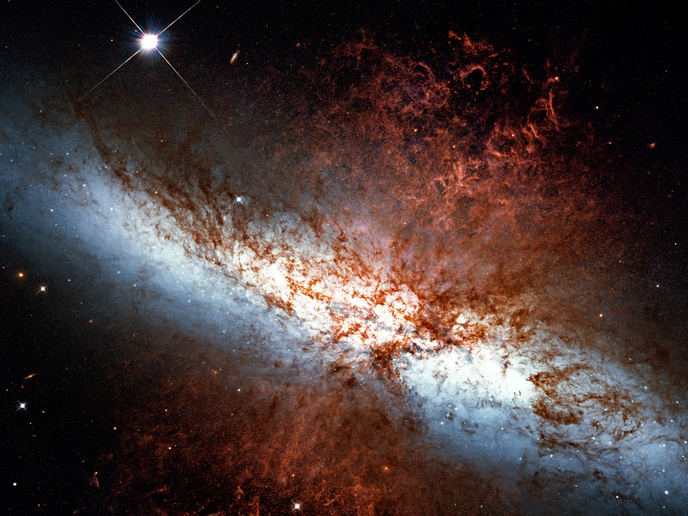Galactic winds not so rare after all
Supermassive black holes and supernovae sometimes cause streams of high-speed particles to blow material out into a galaxy’s halo or even farther out into the space between galaxies. New research(opens in new window) supported by the EU-funded SPECMAP-CGM, CosmicWeb and Cosmic_Gas projects has shown that such galactic winds actually occur quite frequently, casting doubts on previous assumptions regarding their rarity.
In almost every galaxy
The researchers came to this conclusion while examining around 100 galaxies using the Multi-Unit Spectroscopic Explorer (MUSE) instrument of the European Southern Observatory’s Very Large Telescope. Their observations led to the discovery of double-cone-shaped structures characteristic of galactic winds in these galaxies. Study co-author Prof. Lutz Wisotzki from SPECMAP-CGM project coordinator Leibniz Institute for Astrophysics Potsdam, Germany, states in an ‘idw’ news item(opens in new window): “MUSE shows us that such galactic-wide outflows are present in almost every star-forming galaxy. In addition, the new results allow us to recognize exactly what size and shape these galactic winds typically have. Until now, this was only possible in very rare extreme cases.” Powered by growing supermassive black holes or supernovae, galactic outflows are believed to play a vital role in the evolution of galaxies. They are responsible for regulating the build-up of mass and star formation in these galaxies. Theoretical models assume “bipolar” shapes for the outflows, which extend far into the circumgalactic medium – the gas surrounding galaxies outside their disks or interstellar medium(opens in new window) and inside their virial radii(opens in new window). Such shapes have been directly observed in galaxies such as our own Milky Way and in M82, a galaxy about 12 million light years from Earth in the constellation Ursa Major. As reported in the news item, galactic winds can only be spotted in specific spectral lines of light and using extremely high sensitivity measurements. Before the current study, very few cases were known and most were discovered by the MUSE instrument. The news item reports: “The new study with the MUSE instrument now shows directly that the galactic gas flows out into the surroundings of the galaxies, reaching distances of more than 30,000 light years. The observable signal depends strongly on the orientation of the galaxy relative to the line of sight: if the system is viewed from the side, there is strong emission above and below the plane of the galaxy, whereas for galaxies viewed from ‘above’ or ‘below’, the signal is weaker and more evenly distributed. These observations impressively confirm the previously theoretically predicted bipolar form of the outflows perpendicular to the plane of the galaxy.” The study supported in part by the SPECMAP-CGM (Spectro-mapping of the circumgalactic medium across cosmic times), CosmicWeb (Unravelling the Cosmic Web with fluorescent emission) and Cosmic_Gas (Mapping the Cosmic Gas Supply with ALMA) projects was published in the journal ‘Nature’. For more information, please see: SPECMAP-CGM project(opens in new window) CosmicWeb project(opens in new window) Cosmic_Gas project(opens in new window)



